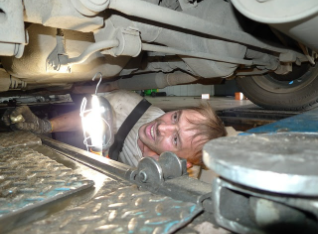If you’re in the market for a car, you’ve probably read up on some of the ways to find the perfect one. But if you want to make sure that your vehicle still has a few years left in it, it might be worth taking a trip to your local mechanic before buying. And before any inspection, let these six tips guide your way.
What is the Vehicle’s History?
When you’re ready to purchase a car, it’s essential to get all the info you can on it, including its history. Knowing the car’s past details will help you gauge how much time is left in its life.
You can also use a car search website to narrow down appropriate kinds of used car for your needs, based on age and the current mileage on the clock.
Inspect the Car Exterior
When inspecting the car’s exterior, start with checking for rust under the car’s body panels and tarps. If you find any, it’s a good idea to check other parts exposed to elements. Be sure to also look for any signs of damage that might compromise the strength of the frame or suspension.
Does the Engine Start?
Start the car and test all systems, including but not limited to: charging system, ABS, airbags, keyless entry/ignition, the horn, heat, and air conditioning. Don’t ignore the dashboard lights, especially if the check engine light is on. If there are any noticeable issues with your engine, don’t hesitate to raise the problem with the seller. While you’re at it, make sure that the engine is making the right sounds. Too much or too little pressure in the exhaust may signal trouble, so don’t hesitate to get your ears on it.
Check Tire Tread and Pressure
Tires are an integral part of any vehicle, and it’s essential to make sure they’re in good condition. Check the tread depth and make sure there isn’t any visible damage to the surface. Are the treads uneven, or is there some extra wear on a few of the tires? These are signs you can easily spot, especially in drift cars due to poor alignment. Not taking care of them could cause damage over time. If you see any, have the tires replaced or have them repaired by a professional mechanic before driving off.
Check the Brakes and Shock Absorbers
Make sure that the brakes and shock absorbers are in good condition and working correctly. When you get to the brake pads, look for any evidence of wear or damage. Make sure that it’s not cracked or broken. Check the spring tension on seat dampeners and make sure there aren’t any signs of sag, especially on rear-oriented cars.
Take It for a Test Drive
Even if you’re already sold on the car, it’s essential to take it for a test drive and get a sense of how well it drives. The last thing you want is to get your car home and find something wrong with how it operates or sounds.
Summing Up
With that, you’re hopefully more prepared to get a vehicle and get it home safely. Before purchasing a car, make sure that you take the time to do your research and know what you’re getting into. If you want to save on cost, you may want to invest in an EV. They are easier to maintain and have longer battery life. Try to stick to cars with an excellent rating and safety rating. And for your sake, make sure the engine works!


.gif?rand=3208)






 Pixabay – CC0 License
Pixabay – CC0 License
